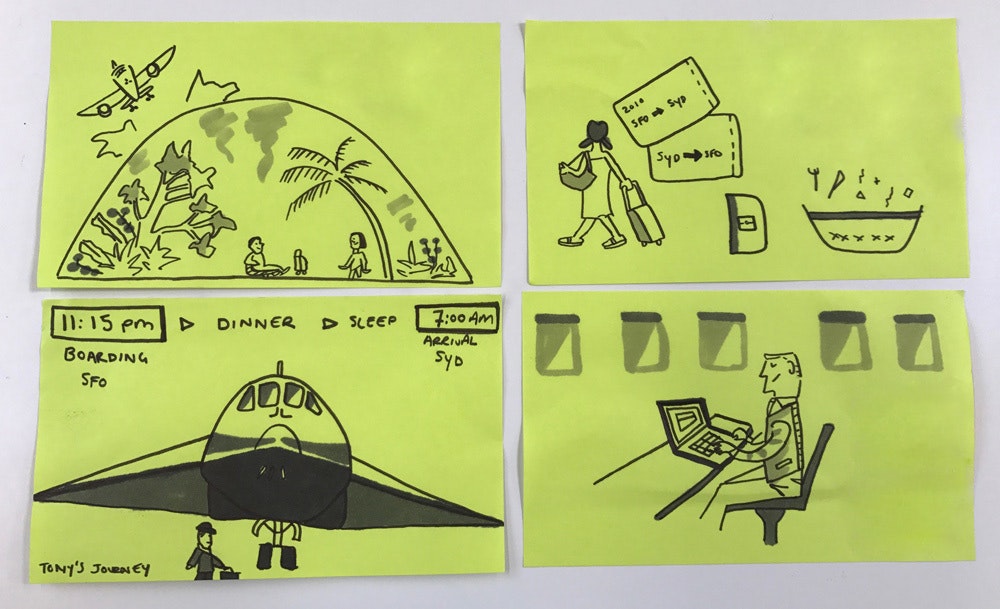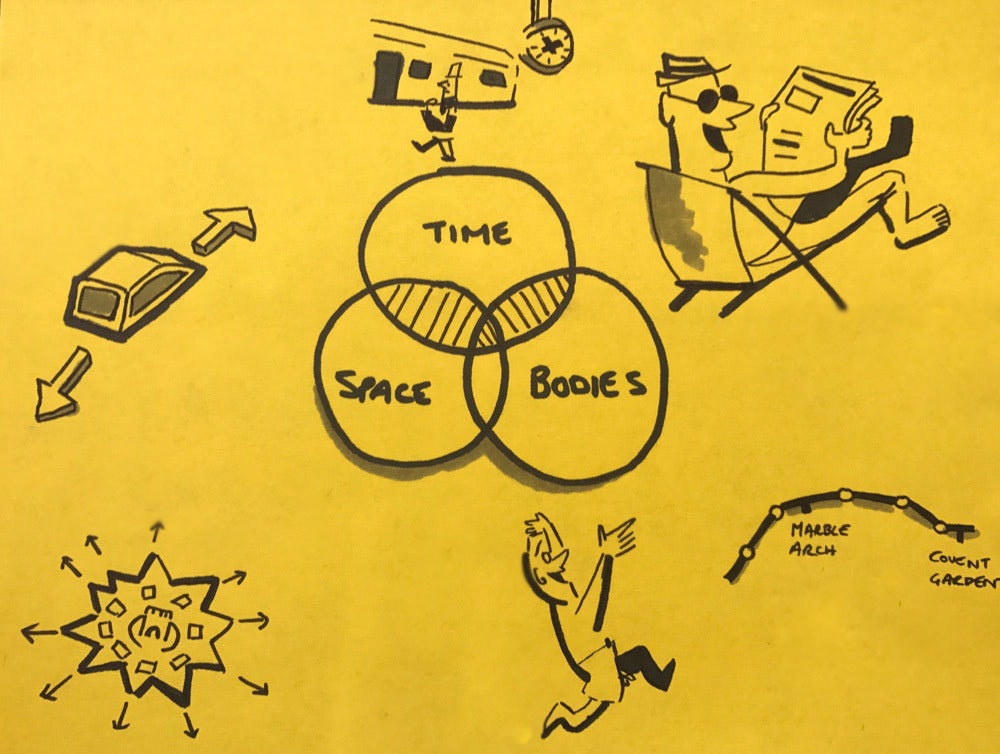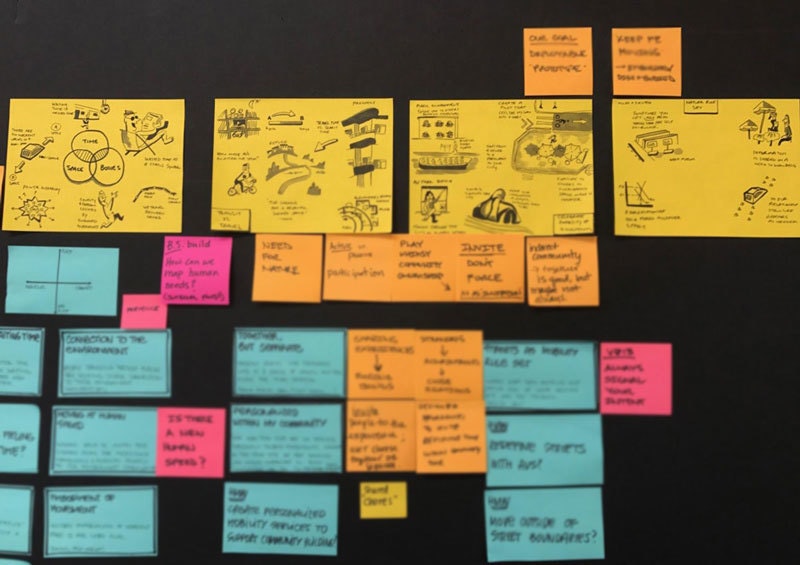To make sense of messy research, get visual

It’s Monday morning and our design team is back after three weeks on the road researching the future of shared vehicles. We've soaked up a ton of inspiration by talking to transport experts and observing commuters.
We’ve brought back thousands of photos and videos and hundreds of Post-its. As we stare at the sea of notes, I feel stuck and a little panicked. Are there answers in this data soup?
This messy moment in the design process is called “synthesis,” when designers start to distill all our research into tangible possibilities. Synthesis can feel ambiguous, stiff, and chaotic all at once; the secret is to keep moving forward any way you can.
My way of conquering the chaos is a method I call “sketch synthesis.”
Here's my sketching process for this project, which you can adapt for your own team.
Step 1: Pare it down
First, I put the notes from each research interview, observation, or experience onto separate poster boards. Then, I took a step back and distilled the information from each of these boards into just four or five sketched post-its.

These sketches are from our interview with an extreme commuter. The express his ideal travel experience: an environment that brings the outside in and serves as an extended coworking space.
Sketches can feature characters, icons, or graphs—anything that provides a helpful cue for you. You don’t need to be a great artist to sketch. The idea is to summarize what you’ve learned visually, even if those visuals are stick figures!
Step 2: Cluster it up
Next, I took another step back and turned my individual sketches from each poster board into a series of sketch clusters, grouped around emerging themes.

This cluster is focused on the theme of "place." It's a mind map of sorts, featuring images that represent a range of experiences, interviews, and secondary research we uncovered related to the theme.
Don’t be afraid to discard the ideas that aren’t standing out. The aim of this step is to sort and refine what you’ve learned, using sketching as a filter.
Step 3: Talk it through
I invited the rest of the team to review the sketch clusters with me. Working together, we turned the clusters into concrete design questions that could help us get tangible, fast.
The goal is to share your sense-making with others to figure out if you’ve captured the essence of the research, or need to go back to your original poster boards and find the missing thread that ties it all together.

These sketch clusters helped the team gather our thoughts and articulate the questions we hoped to explore with our client in the next phase of the project. They captured our research insights and pointed the way to new transportation innovations.
For me, sketch synthesis is a way of bringing clarity and momentum to tough moments in the design process. Plus, drawings are a natural starting point for design, which the team can build on and our clients can easily understand.
Sketching also creates a common language for designers to communicate. At IDEO, people come from all around the world. On this team, I worked alongside designers from Germany, South Korea, France, and the U.S.
While I’m drawn to sketching, you might have a natural inclination to express yourself through role play, writing, film, or data. There are no limits to the creative problem-solving skills that might help your team synthesize.
The secret is to keep moving toward the answers, even when things feel messy—and to have a little fun along the way.
This post was adapted from a talk I presented for Mixed Methods, hosted at Airbnb in San Francisco.
Words and art

Subscribe

.svg)







